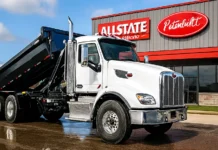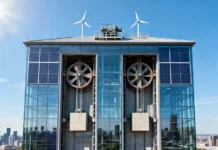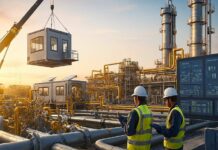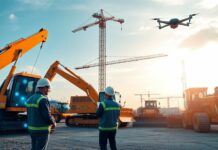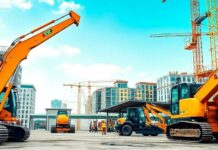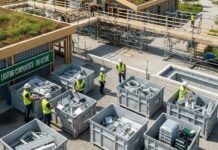During the London Climate Action Week 2025, Volvo CE, the Swedish Embassy, and the Swedish Chamber of Commerce went on to gather the industry, players, policy leaders, and also air-quality advocates in order to address the urgent requirement to speed up the shift to zero-emission construction equipment. The message was loud and clear: air pollution happens to be a huge public health issue that cannot be overlooked.
It is well to be noted that diesel compact machines, which are prevalent in cities, happen to be a major contributor to the crucial public health issue in terms of air pollution. However, they are often exempt from low emission zone regulations.
Partnership is indeed essential to make sure that the potential for zero-emission alternatives to prominently enhance urban environments does not get ignored. Stakeholders throughout the value chain went on to work together to share their best practices and also break down barriers so as to drive the immediate requirement to shift to emission-free construction.
Interestingly, a high-level roundtable was held at the Swedish Embassy at the time of London Climate Action Week in June 2025, which underscored certain positive effects that shifting to electric construction machines can go on to have on enhanced urban air quality.
Leaders from Volvo CE, the city of London, and also influential researchers as well as campaign groups came together during this high-level roundtable that took advantage of the momentum from the yearly festival so as to help speed up viable solutions to poor air quality.
With construction now going ahead and becoming a dominant source when it comes to black carbon emissions in London, even exceeding the likes of cars for the very first time, there is indeed an immediate requirement for the leadership in order to drive the much-required change. Apparently, the discussion at the round table went on to highlight that the inaction on this would indeed be very catastrophic.
It is well to be noted that in London alone, there happen to be approximately 5000 diesel compact excavators at work in the present times that happen to emit as many harmful pollutants of nitric oxide and nitrogen dioxide and even the particulate matter as 100,000 diesel cars. However, these machines at present happen to fall outside the ultra-low emission zone (ULEZ) restrictions.
With the recent statistics showing that just 17% of global cities comply with WHO air quality guidelines, and air pollution being linked to almost 8 million premature deaths across the globe in 2021, the urgency when it comes to clean air in our cities has never been more evident.
The fact is that transitioning to electric-powered construction equipment is going to significantly decrease air and along with it noise pollution. These machines, which happen to produce zero tailpipe emissions as well as less vibration, energy loss, and even noise, go on to offer unmatched benefits for densely populated areas, thereby increasing the health as well as well-being of everyone around.
In order to fulfil their potential, however, it is really very critical to speed up the infrastructure development, get all the policy support that is possible, elevate the green energy supplies, and even look out for the much-needed cross-industry cooperation. The head of the compact business unit at Volvo CE, Thomas Bitter, went on to state at the roundtable that cities such as London happen to be making enormous progress so as to improve their air quality. However, ignoring the construction equipment in low emission policies happens goes on to miss a key health opportunity. Zero-emission construction equipment solutions do exist. However, there adoption happens to be very slow. One needs a full value chain partnership in order to break down the barriers so as to change as well as speed up the overall transition to emission-free construction, which is indeed essential when we talk of urban health.
A successful trial goes on to demonstrate potential in order to cut construction emissions
The round table also went on to underscore the results coming from an almost 12-week trial that was conducted by Volvo CE, Transport for London (TfL) as well as contractor FM Conway, wherein the diesel machines happened to be replaced by three zero-emission electric construction machines. Due to the fact that these electric alternatives go on to produce zero nitrogen oxide and PM emissions, the findings as expected revealed that the trial had hence gone on to remove almost 8 kg of nitrogen oxide as well as non-methane hydrocarbon emissions from the streets. Apparently, this happens to be the same amount of nitrogen oxide as would be pumped out from a diesel car that is traveling over 39,000 miles.
It is worth noting that diesel compact machines disproportionately happen to be higher emitters because the fact is that they are not required to be fitted with the same particulate filters that passenger cars or even for that matter larger construction equipment are required to have.
This is due to the fact that bigger machines have historically been a major focus area compared to smaller ones in terms of tackling air pollution. But as a matter of fact, while the compact machines happen to make up just around a third of construction equipment across Europe, they comprise more than 50% of the nitrogen oxide emissions.
Hence, scaling this kind of solution to other cities across the world could therefore transform the quality of air across urban environments. The round table, apparently, concluded with an urgent call to action for cities across the globe so as to go ahead and break down the barriers, open partnerships, and develop initiatives. By way of addressing the overlooked effect of diesel compact machines when it comes to urban air quality, incorporating construction within low-emission zones, and also embedding sustainability criteria within public works, stakeholders can go ahead and shape healthier urban environments for one and all.





